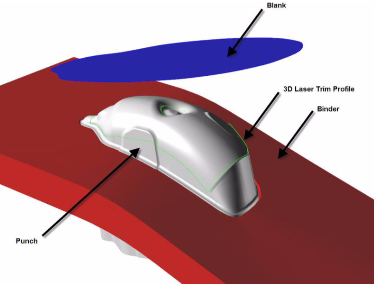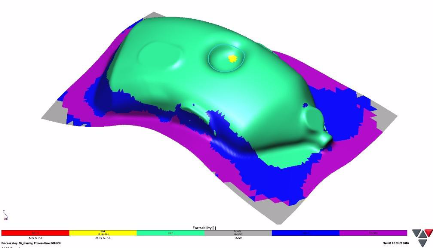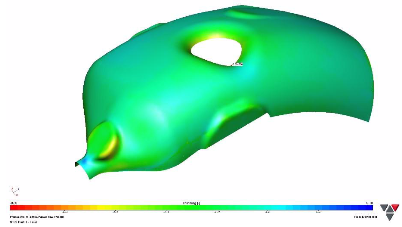6 Ways Sheet Metal Hydroforming Can Benefit Your Project
Contents
Although metal hydroforming is not new, it offers a great alternative that many manufacturers are not considering. If your company does not own or operate any hydroforming equipment (either sheet or tubular hydroforming), how do you consider whether hydroforming is suitable for your sheet metal product?
The truth is most companies that own and operate a hydroforming press in-house also run hydroforming simulation alongside their equipment. The companies that sell hydroforming press machines are almost giving customers the advanced simulation software needed to ensure their hydropress machine sale is a winning solution for their clients. Maybe someday mechanical stamping press machine sales companies will do the same!
In the case of needing to run “what if” scenarios or cost-benefit studies of stamped vs. hydro sheet metal forming, StampingSimulation can provide advanced simulation services to investigate, optimize and design successful metal forming processes for any given sheet metal product.
6 Ways Sheet Metal Hydroforming Can Benefit Your Project
Here are our top six reasons why a sheet metal product may be considered (or changed to) hydroforming:
1. Reduce Tooling Costs: Only a single sided tool is required and often this tool may be softer than a traditional stamping tool, thanks to the way hydroforming applies pressure more evenly. The single tool may even be 3D printed OR machine quickly from a soft material such as resins and sometimes wood (such as MDF).
Only a single sided tool is required for sheet metal hydroforming

Only a single sided tool is required for sheet metal hydroforming.
2. Deep draw complex shapes: Sheet hydroforming often allows sharper and deeper complex 3D shapes to form successfully when compared to stamping in a traditional press tool. Parts that were stamped in two or three stages, may be sheet hydroformed in just a single stage. Sheet metal hydroforming simulation can determine what is possible for any sheet metal product.

3. Reduction in material thickness: If a sheet metal stamped product was thinning by 30%, the same part will experience much less thinning in a hydroforming process – perhaps as little as 10% thickness reduction in many cases. This means a stamped version of the same product is thicker (and more costly) than a hydroformed sheet metal part, which can be of thinner stock material thanks to the more uniform elongation during sheet hydroforming.

4. Lower cost product development: During the prototyping stage of a sheet metal product, changes to the design and tooling are time consuming and expensive for traditional stamped metal parts. Sheet hydroforming significantly reduces product development costs for the above mentioned reasons.
5. Short run production, high efficiency: Sheet metal products that are low volume in nature are suitable for hydroforming. Tooling changeovers are simplified and change over time is minimal. There is no upper tooling to change over between product/tooling changes. Each product is a single lower tool.
6.High-quality surface finish: Thanks to soft tooling contacting the sheet metal during forming, there is almost never a need to re-finish the formed part. There are no significant draw marks, skids lines, scratches or scuff marks that would otherwise be buffed or polished on a traditional stamped part. Furthermore, it is often possible to hydroform a painted (or coated) part without causing the coating to be harmed.
Learn More
StampingSimulation specializes in sheet metal forming simulations of all types, including sheet metal hydroforming.
To learn more about what our processes can do for you, contact us today.
